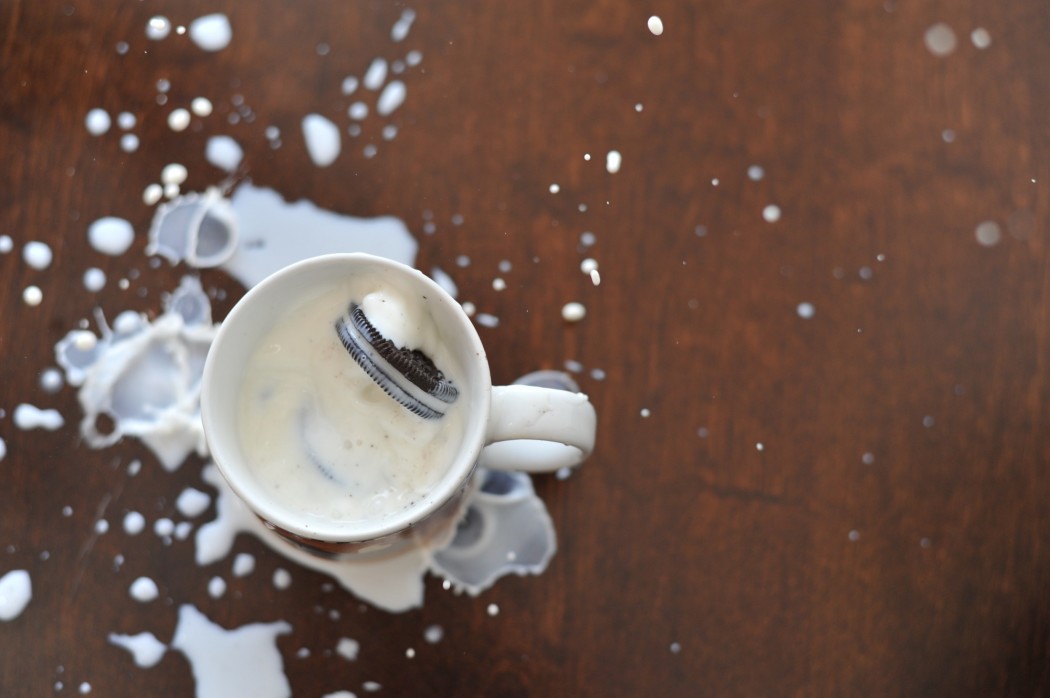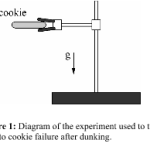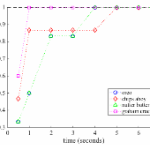No more soggy cookies: The optimal cookie dunking time
By student contributors Randy Hurd, Ben Roden and Tadd Truscott
We have all taken that terrifying risk with our chubby, cookie-laden fingers wedged into a glass of ice-cold milk, asking if we can wait just a little longer. We imagine that perfectly soaked, soft and flavorful cookie, while simultaneously overcome with the fear of what may result if we wait too long. To prevent this dunking-based anxiety, I have dedicated a lonely weekend to finding the optimal cooking dunking time.
Methods
Four types of commercially available cookies were investigated: Oreos, Chips Ahoy, Nutter Butters and Graham Crackers. Cookies were dipped halfway in two percent milk and weighed both before and after to measure the mass of absorbed milk, with dunk times varying from 0.5 to seven seconds. Additionally, cookies were dunked for a standard dunk time of six seconds and then clamped horizontally until the cookie broke, as shown in Figure 1. Time to failure was recorded for each cookie.
Results
Figure 2 shows the cookies tested absorb more than 80 percent of their liquid weight relatively quickly (less than two seconds) and all absorb 99 percent of their liquid weight capacity within five seconds. More porous cookies, like graham crackers and Chips Ahoy cookies, absorb liquid significantly faster than hard-pressed cookies. The results from the cookie breaking experiment shown in Figure 1 are summarized in Table 1. These experiments show that more porous cookies grow soft and break faster than hard-pressed cookies. However, any dunk under five seconds should be safe from a premature breakoff that would result in a soft cookie at the bottom of a glass.
Finally, though this observation may seem painfully obvious, it was observed that moist cookies continue to grow softer over time. In other words, it is not necessary to suspend a cookie in a liquid until the desired level of softness is reached. Instead, a cookie may be dunked for a relatively short period of time (two to five seconds) to absorb the maximum amount of possible liquid, followed by an out-of-glass waiting period until the ideal softness is achieved.
Randy Hurd is a graduate student in mechanical engineering. He didn’t think this writing project was quite what the Statesman was looking for, but decided to send it along anyway. He hopes it will enrich reader’s lives. randyhurd@googlemail.com




